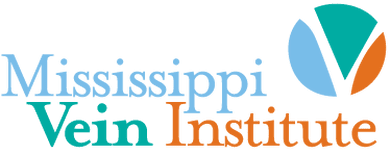Venous Ulceration Treatment
in Madison & Jackson MS
Venous Ulceration Experts
What are venous ulcerations?

Venous ulcers are also very effectively treated with a combination of endovenous laser ablation and ultrasound guided sclerotherapy. The abnormal veins that are causing the venous ulcer are identified with an ultrasound exam. The abnormal veins are then destroyed with a combination of endovenous laser and ultrasound guided sclerotherapy. Venous ulcers then typically heal within 1 to 2 months and they rarely recur. Patients are kept in compression hose until the venous ulcer fully heals.
Are you a candidate?
Patients undergo a comprehensive lower extremity venous ultrasound by a Registered Vascular Technician to determine if they are a candidate for endovenous laser ablation. The endovenous laser procedure is indicated for those patients who suffer from varicose veins or venous ulcerations caused by venous insufficiency (faulty valves) within a portion of the superficial venous system. It is a minimally invasive procedure that is incredibly effective. The endovenous laser treats the underlying source of varicose veins and venous ulcerations.
What Does the Procedure Involve?
Patients are mildly sedated therefore, they must have a driver with them. Upon arrival for the procedure, photographs are taken, the course of any varicose veins are marked on the skin, and an intravenous catheter is placed for the administration of versed (sedative). Supplemental oxygen is administered and monitors for blood pressure, EKG, and pulse oximetry are applied. The leg to be treated is prepped with hibiclens and sterile draped. The access point for the introduction of the laser is identified using ultrasound guidance. The laser fiber is small, about the size of a strand of spaghetti.
The laser fiber is precisely positioned within the target vein using ultrasound guidance. 400 to 500 cc of tumescent anesthesia is then carefully placed circumferentially around the vein using ultrasound guidance. The tumescent anesthesia prevents any sensation of pain while the laser is firing and its presence around the vein prevents the heat of the laser from being transmitted to the skin, muscles, or nerves. The art of the procedure lies in the placement of the tumescent anesthesia. It is the most critical step.
Once the tumescent anesthesia is in place, the proper position of the laser fiber is re-checked and the laser firing is initiated at a pullback speed of .5 to 1 mm/sec. A typical laser run takes about 10 minutes. There is no sensation while the laser is firing. Patients are comfortably sedated throughout the entire procedure. The vein that is treated with the laser is the underlying cause of the varicose veins that are seen at the skin surface. The vein that is treated with the laser is not removed, the body simply absorbs the ablated vein over time. Micro-phlebectomy (the removal of existing varicose veins thru micro-incisions) is then performed on any large and ropey varicose veins seen at the skin surface.
The incisions are very, very small and leave little to no mark on the skin. No stitches are required. Sclerotherapy is then done to clear any associated spider veins. It is the combination of all three therapies (endovenous laser ablation to treat the underlying cause of the varicose veins, micro-phlebectomy to remove the existing varicose veins at the skin surface, and sclerotherapy to clear associated spider veins) done simultaneously in a single treatment session that is responsible for our fantastic results. The treated leg is then wrapped with an ace bandage for 2 days followed by a compression hose for 1 week. The hose may be removed to shower and sleep. Any post-procedure pain is easily managed with Motrin or Alleve. Daily activities may be resumed on the second day. Exercise may be resumed on the third day. Patients are able to return to work on the second or third day.
Some temporary skin numbness above the course of the vein treated with the laser is a common occurence. It is not a big deal and typically totally resolves with time. A “pulling” sensation along the course of the vein treated with the laser is also common. The sensation is usually felt 1 week after the procedure. The “pulling” sensation is due to the healing process and typically resolves in 2-3 weeks. Follow-up ultrasounds are done at 2 weeks and 3 months to ensure the vein treated with the laser remains closed. The chance of varicose vein recurrence following successful endovenous laser treatment is less that 1%.
Are They Any Potential Complications?
Complications are very rare. The one potential complication to be acutely aware of is the formation of a deep venous clot. The complication is very, very rare following endovenous laser ablation (<1% nationally, <.07% in our clinic) and is almost completely prevented by walking (resumption of normal activities) and compliance with wearing the ace wrap and compression hose as directed. The thing to look out for is a firey red, hot, and painful leg. If this occurs, call Dr. Manning or Dr. Adams on their cell phone immediately and they will handle the problem. Again, this complication is extremely rare following endovenous laser ablation but it is a potentially dangerous occurrence so it is important for each patient to know how to recognize it. A more common occurence is for the patient to notice some skin numbness along the course of the laser run. The numbness typically totally resolves within 1 to 2 months.



